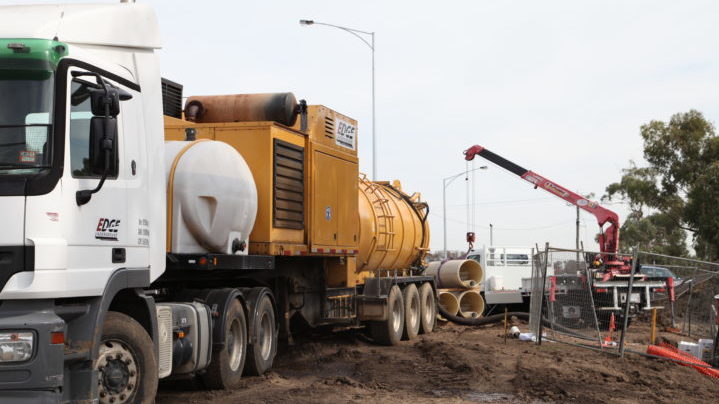The demand for work within industries such as microtunnelling is not always stable. Periods of high and low demand are constantly changing and can be hard to predict. Contractors need to be able to balance these demand periods and consider their decisions – as one poor choice can be the difference between a business thriving or going under.
According to Edge Underground Managing Director Stuart Harrison, during periods of high demand there is an excess of work, and it’s not uncommon to see a lot of new contractors enter the industry and old contractors come back.
“When there is a lot of work available new and old companies enter the market, buy new machines and complete the jobs available. This is great for the industry as it means jobs aren’t being turned down because there are not enough machines or contractors to meet demand.
“But at some point, this changes, and when a low demand period comes there’s not a lot of work available so inevitably some companies go broke and the availability of skilled operators decreases.
“If an operator is not getting enough hours or their company goes broke they will likely take another job elsewhere, and chances are it won’t be in microtunnelling. This can lead to a shortage of experienced operators when they are needed during higher demand periods.”
To buy or not to buy?
According to Mr Harrison, the capabilities of contractors would be increased if more continuity were present in the industry, such as companies or the government having a microtunnelling budget every year.
“If there was more continuity contractors would know how much work was always available, and investing in new machines and equipment would be viable. However, the industry is developer driven and there is no continuity,” Mr Harrison said.
“During busy periods all your machines may be out in the field, and you may feel pressured to invest in a new machine as you don’t want to let clients down and/or miss out on money that could be made.”
Mr Harrison said the short-term payoff of purchasing additional machines may seem great as contractors get work and help meet demand. However, in reality, the long-term outlook may not be beneficial and each contractor needs to be able to assess how much more equipment they really need.
“In the long-term you have to consider the cost of the machine versus revenue in the short-term. When a low period comes you may not have work for the machine you’ve bought – and if you’ve over-invested in equipment that isn’t able to do any jobs, you may be at a loss.”
The importance of versatility
One way to balance the high and low demand periods is to ensure the equipment being invested in is versatile and able to work across a wide range specifications and conditions without having to spend a lot of money on additional machines or modifications.
“If you buy a machine that can go from 350mm to 1500mm with simple modifications through a variety of ground conditions, it can be adapted will little to no cost. This means when it’s quiet in one area, you’re able to cover other areas which have more work available,” Mr Harrison said.
“However, contractors will often buy a machine specific for a job, which limits what they are able to achieve with it on other jobs, unless the same conditions are present or extensive modification is done. This costs money, and in low demand periods, funds may not be available for additional machinery or modifications.”
When it comes to dealing with high and low periods in the microtunnelling industry it is important to look to the long-term, look for versatility, and carefully consider the cost and benefits of investing in any new equipment.
If you are a microtunnelling contractor looking to join a highly skilled team, or would like to learn more about the Edge Underground call 1300 JACKED.

